This Post May Contain Affiliate Links. Please Read Our Disclosure Policy.
This is the best homemade sandwich bread recipe. And it can all be made in one bowl. This recipe makes 2 loaves. Perfect for eating one now and freezing one for later!
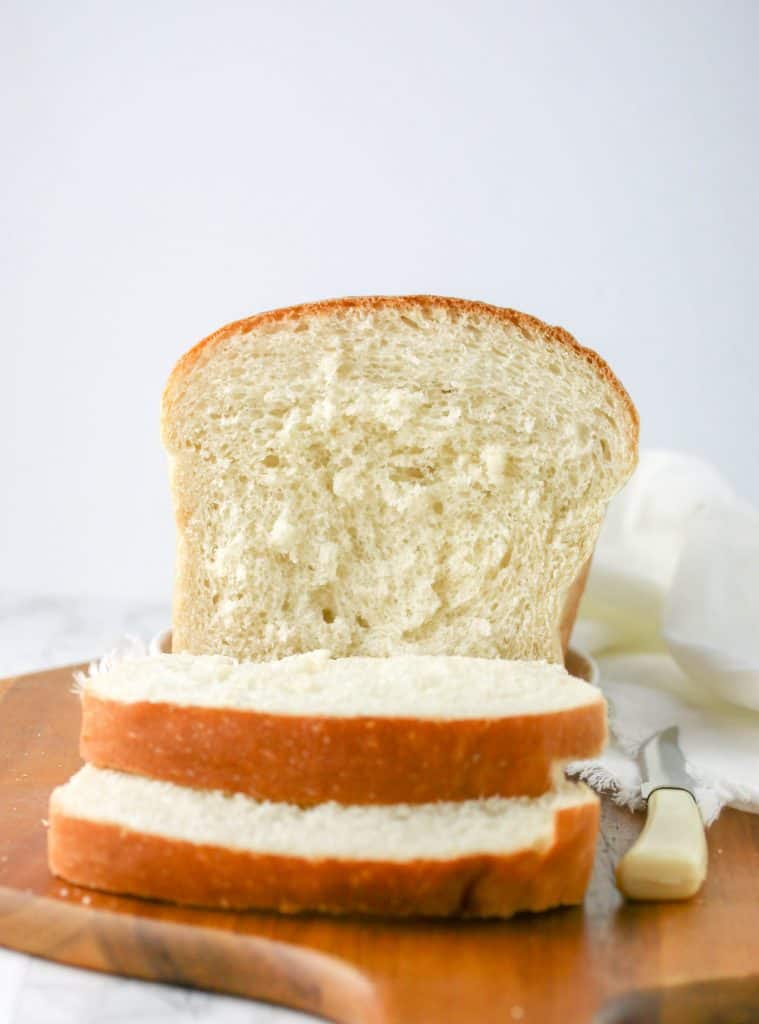
Oh my word. Homemade bread. Is there anything better?
Seriously I don’t think there is. And when a loaf of homemade bread is easy like this one and can be made in one bowl. I’m telling you before you know it you will be skipping past the bread aisle with a smug look in your face next time.
I’m going to tell you all my tips and tricks to rock out the best homemade bread recipe evvvvvvvvvvah.
This recipe is one of 60+ Home Baking Projects To Try!
What Are The Ingredients For Homemade Bread?
Here’s the thing. Homemade bread is just so simple. Because it only takes a few ingredients that I’m going to put next paycheck on that you have in your pantry.
- Bread Flour (this gives it great texture, but you can substitute all purpose if you need to)
- Active Dry Yeast – or you can use instant yeast (you can just add that right to the bowl)
- Vegetable Oil (or any neutral flavored oil will work well here such as canola oil)
- Warm Water (between 105-110°F)
- Salt
- Granulated White Sugar
That’s it! Told you homemade bread is easy.
How To Make The Best Homemade Bread – Step By Step
Step 1 – Proof Your Yeast
Start by proofing your yeast in your mixing bowl. You want to add the water, sugar, and your active dry yeast. Let this mixture sit for about 10 minutes to allow the yeast to get foamy.
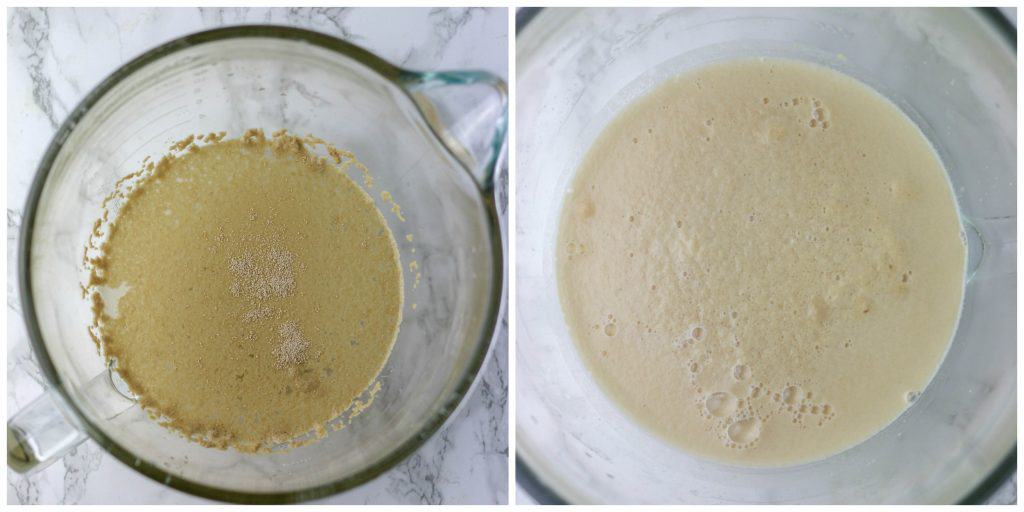
Step 2 – Then add in the vegetable oil, flour and salt.
Add the salt last.
Step 3 – Knead the dough
This step will take about 10 minutes. I start the stand mixer on low with the dough hook attachment. Once a dough has come together, then turn the mixer up to high. Just be careful your mixer might try to leap off the counter!
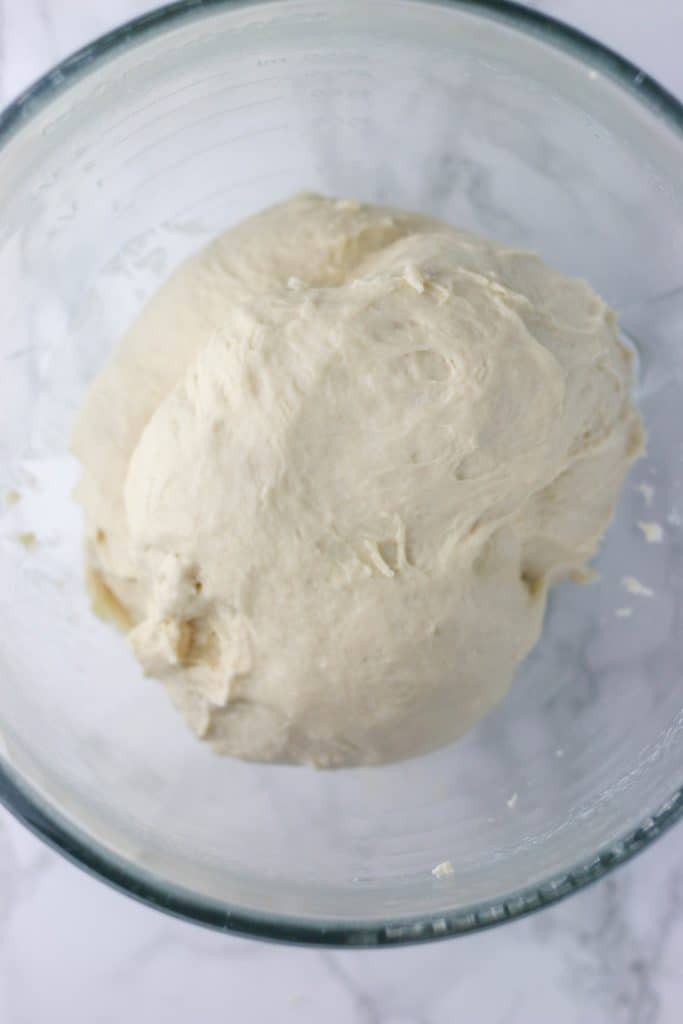
Step 4 – Let the dough rise.
Spray the dough and flip it over and spray it again. Then cover it again to let it rise for an hour.
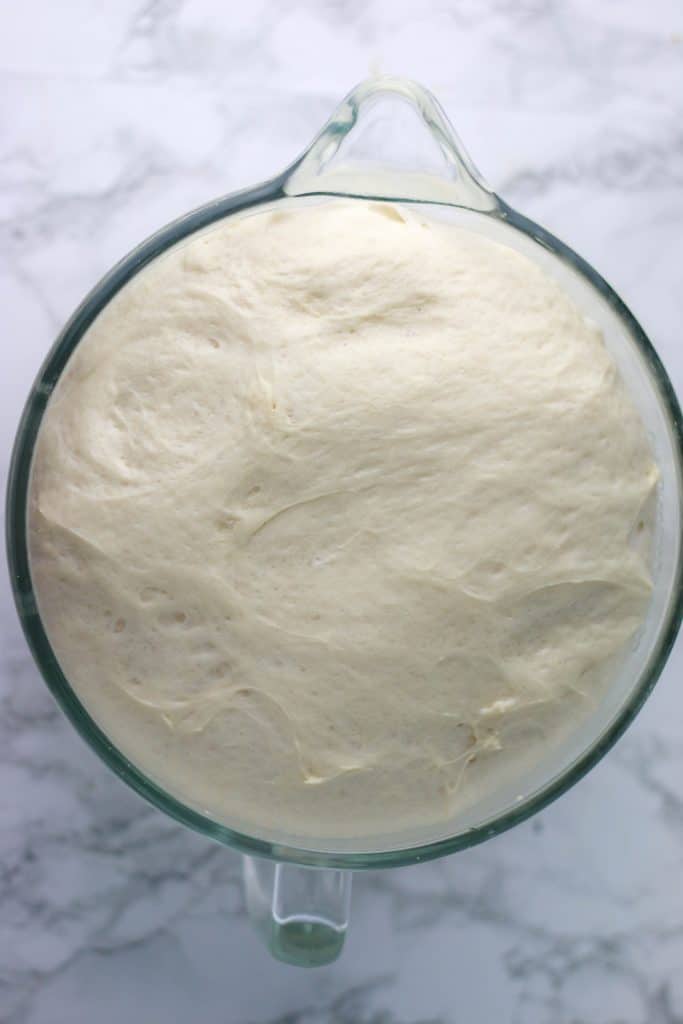
Step 5: Then gently push the dough down.
Just simply make a fist and gently push down into the dough to deflate the dough a bit. And then remove the dough onto a lightly floured surface.
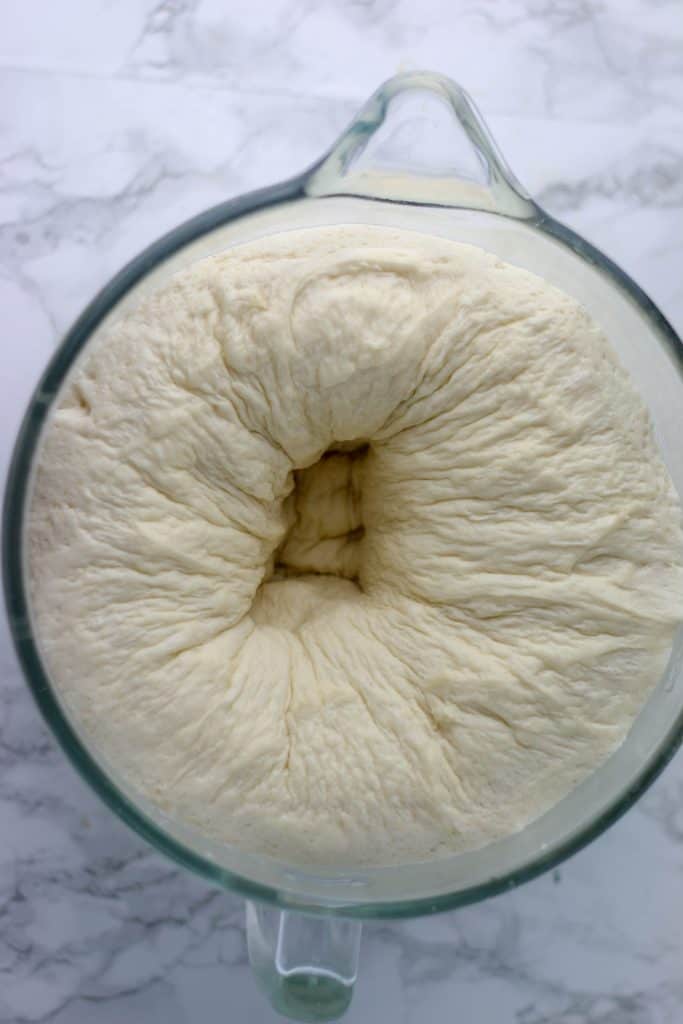
Step 6: Then it’s time to divide the dough in half. And shape into a greased loaf pan.
For the shaping I don’t fuss too much. All I do is flatten the dough into a rectangle, about as wide as my loaf pan. Then roll the dough up, lengthwise like a log, with seam side down and tucking the ends under. You need to let these rise for another 45 minutes to an hour (time may vary due to your kitchen temperature).
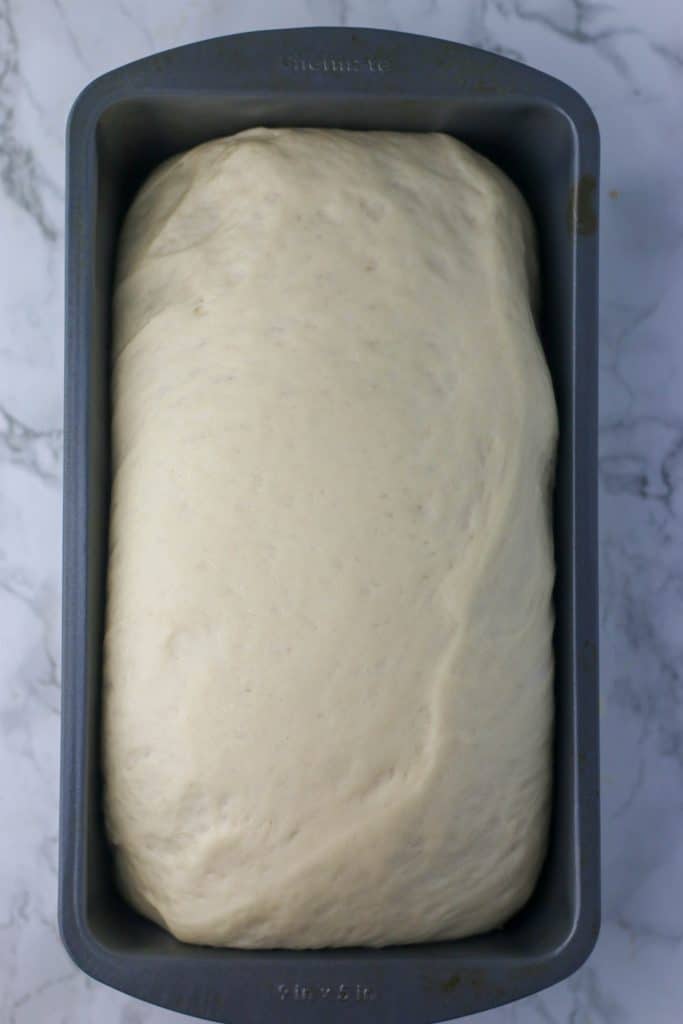
Step 7: Then let the bread cool on a cooling rack before slicing.
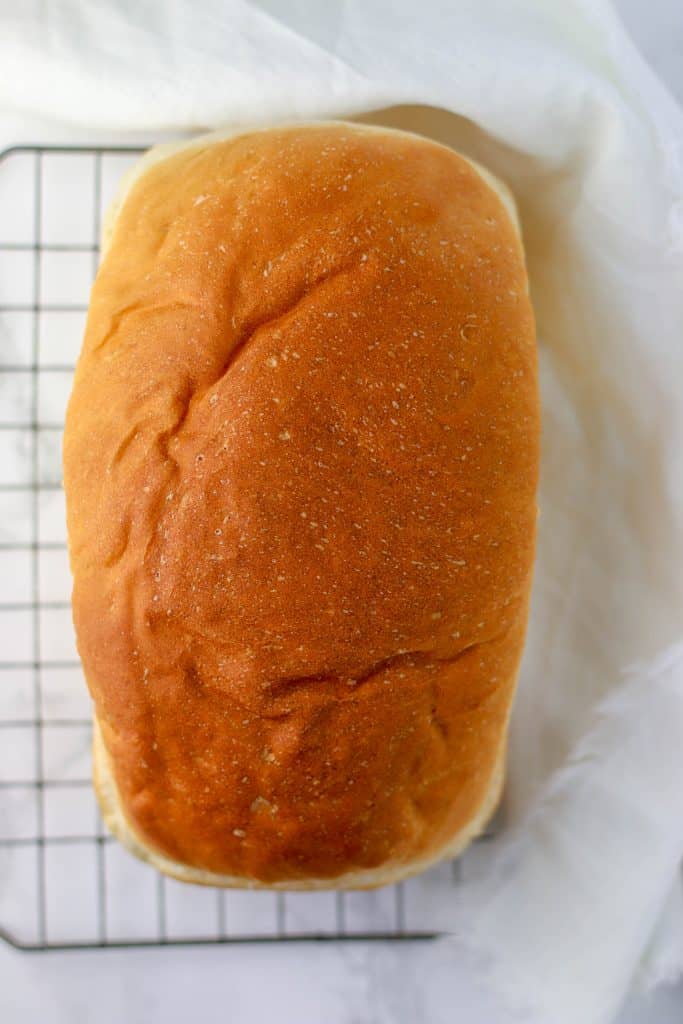
Recipe Tips
- Check the water temperature. Make sure the water is at the correct temperature before adding your yeast. If it’s too hot it will kill the yeast. If it’s too cold, the yeast will not become active. I recommend using a digital thermometer be the most accurate.
- Look for that foam! You want to see the yeast getting all foamy before you add in the rest of the ingredients. If it doesn’t then the water temperature may have been too hot, or too cold, or your yeast may have been expired.
- Use the right kind of yeast. Use active dry yeast, not instant or rapid rise yeast. I highly recommend getting your hands on Red Star yeast if you can. Their yeast is by far superior to any I’ve used! For a complete run down on yeast, different types of yeast.
- Measure your flour accurately. I use a kitchen scale for this recipe so I can ensure I am exact. If you don’t have one, then you want to fluff up the flour first. Then spoon the flour into your cup and level with a flat edge. For a complete how and why you need to measure your flour accurately read this post on how to measure your flour accurately.
- Add your salt last. Salt can actually kill the yeast so make sure you add the salt last so it is not in direct contact with the yeast. You can read more here about the role of salt in baking.
- Do the windowpane test. To know if you have kneaded enough conduct the windowpane test. This is where you take a piece of dough and stretch it. If the dough stretches so you can see through it like a “windowpane” then it has been kneaded long enough. If it tears, keep kneading.
- Spray and flip! Make sure to spray the dough and flip it over and spray it again before it’s allowed to rise. No need for a second bowl here.
- Let it rise, baby. The dough should take about an hour to rise but that will depend on the temperature of your kitchen. If it’s colder than 65 degrees it may take a bit longer.
- Check that temperature. To test for doneness, you can insert a digital thermometer and if it registers 190°F then the bread is done.
- Be patient, my friend. Make sure the bread has cooled completely before you attempt to slice it!
For more help in making homemade yeast bread recipe, read this post!
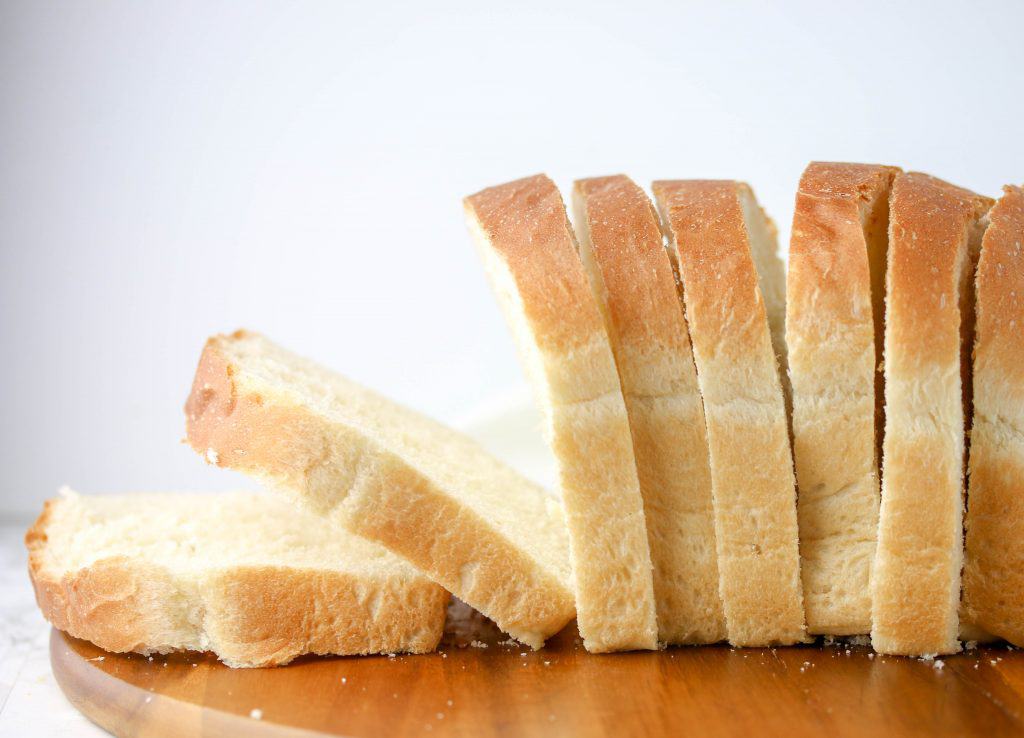
Ingredient Substitutions
First of, let me state I don’t always like making substitutions if I can help it. But with that being said, sometimes it’s just necessary to substitute. If you do, please be aware you might not always get the same results.
Water Vs. Milk
This recipe calls for water and not milk. If you used milk, it would add more richness and creating a softer texture. But keep in mind, the rise time would increase. And when you check for doneness, you want to look for a higher temperature, about 205°F.
Bread Flour Vs. Other Flours
I love using bread flour in this recipe. It gives great structure and chew. But if you don’t have bread flour, you can use all purpose flour to make it. The desired texture and chew won’t be the same. It may be a bit softer of a dough to work with as well.
If you want to use whole wheat flour try my Whole Wheat Sandwich Bread. I recommend using white whole wheat flour. White whole wheat flour is 100% whole wheat but is a softer wheat kernel than 100% whole wheat. If you only have regular 100% whole wheat flour, I recommend then using half bread (or AP) flour mixed with half whole wheat flour.
Oil Vs. Melted Butter
You can definitely use butter instead of oil. It will provide greater flavor, so why not try it? Just make sure the melted butter has cooled slightly so it doesn’t kill the yeast.
White Sugar Vs. Honey
I used regular sugar, but honey can definitely be used in place. You can substitute them interchangeably. Just keep in mind, the type of honey you use could add a floral note to the final bread.
Instant Dry Yeast Vs. Active Dry Yeast
I used active dry yeast. Now as late, I have read you can add active dry yeast directly to your bowl just like instant yeast. You do not need to proof it anymore before hand. I still like to proof it first before proceeding with the rest of the recipe. This also ensure the yeast is alive and I’m not wasting a ton of time.
You can use instant yeast instead. Instant yeast you can just add directly to the bowl. No need to proof it before hand. Using instant yeast will decrease your rising times.
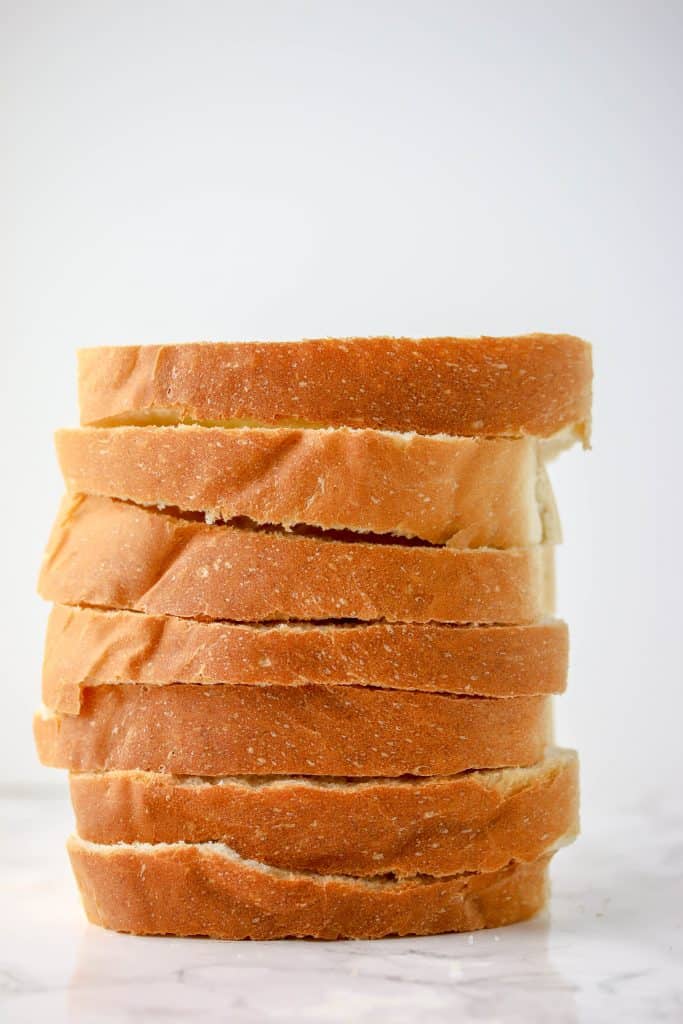
Homemade Bread FAQ’s
Yes you can. But it will take a little more muscle and time to knead the dough but totally doable.
Oh my word yes! Homemade bread is a fraction of the cost. And let’s face it way better for you as well. Unless you are buying artisan bread from a bakery (which is going to cost you) bread from the grocery store has a ton of preservatives and weird ingredients that frankly I’m cool with not having in my life.
And honestly, even though making your own might take a little more work on your part. Most of the time it’s hands off time while you let the bread do its thing and rise and such.
I like to use a digital thermometer to check for doneness. Insert the thermometer into the bread. It should read 190°F. And the top should be golden brown.
Well in my house about 1 day if I’m lucky. I think we both dug into the first loaf of this recipe in about and hour. #noregrets. But if you don’t devour like a bunch of greedy vultures then it will last 2 to 3 days at room temperature. Just let the bread simply cool completely then wrap in plastic wrap, foil or a plastic bag.
Absolutely! You can freeze it baked or unbaked.
To freeze unbaked: Go through the recipe to the final shaping. Shape the loaves and place in the pan. Then freeze uncovered. Once frozen, then cover it completely with plastic wrap, foil or a plastic bag. When ready to bake, remove the plastic or foil and let them rise (this will take 45 minutes to 1 hour). Then you can bake as normally.
To freeze baked bread: Once the bread has cooled then wrap in plastic wrap (then in foil or a plastic bag) and freeze. You can allow the bread to thaw at room temperature when ready to enjoy.
You can read the full post here on how to freeze bread.
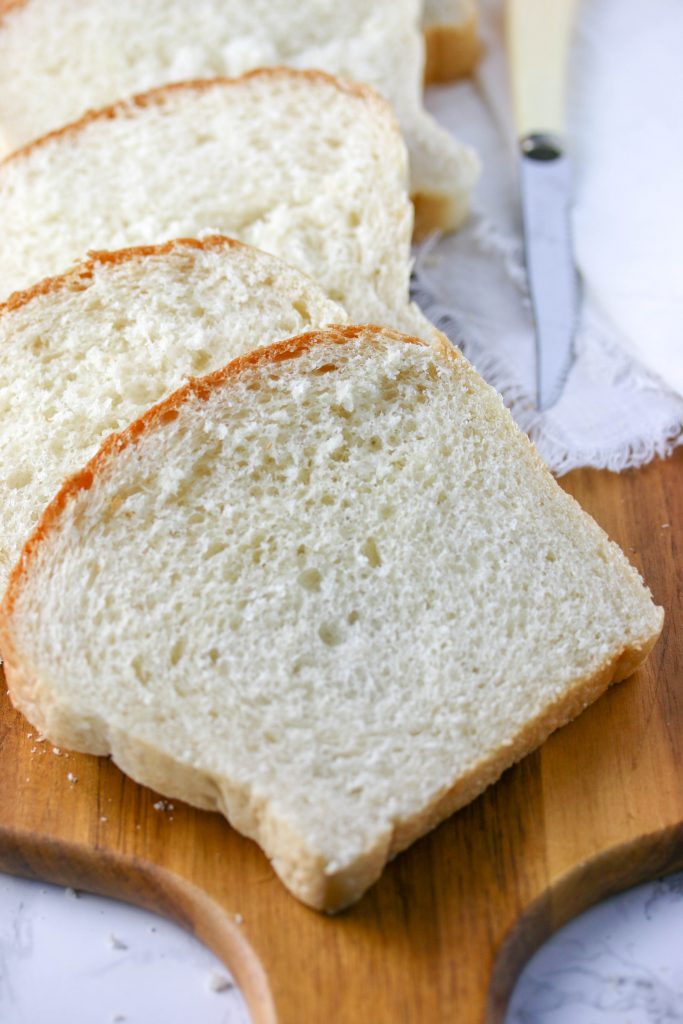
Bread Recipes To Try:
If you try this recipe, let me know by leaving me a comment and star rating below! And don’t forget…
You can also get my FREE guide on how to freeze bread below!
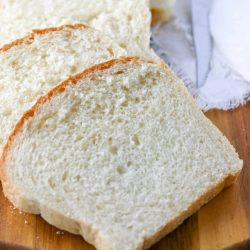
Sandwich Bread Recipe
Ingredients
- 2 cups (480 ml) warm water 110 degrees F/45 degrees C
- 1/4 cup (50 g) white sugar
- 1 1/2 tablespoons active dry yeast
- 1 1/2 teaspoons salt
- 1/4 cup (60 ml) vegetable oil
- 6 cups (720 g) bread flour
Instructions
- In the bowl of your stand mixer with a paddle attachment, dissolve the sugar in warm water, and then stir in yeast. Allow to proof until yeast is bubbling and foamy.
- Stir in the vegetable oil, flour, and salt until a sticky dough forms.
- Switching to your dough hook attachment, and knead dough (start out with the mixer on low until the flour has been incorporated then increase speed to medium until smooth and the dough comes away from the bowl, about 6-8 minutes until a smooth, slightly sticky dough forms and comes away from the sides of the bowl.
- Spray the top of the dough with cooking spray and turn over the dough. Spray the top of the dough. Cover with a damp cloth. Allow to rise until doubled in bulk, about 1 hour.
- Punch dough down. Remove the dough from the bowl and place onto al lightly floured counter. Divide in half. Shape into loaves by flattening each piece into a rectangle (about the width of your loaf pan) and then roll into a log. Tuck the ends under and place into two well oiled 9×5 inch loaf pans, seam side down. Allow to rise for 45 minutes (to 1 hour depending on kitchen temperature) dough should bounce back when touched, and be slightly higher than the pan (about 1 inch higher). Near end of the rising time, preheat the oven to 350°F.
- Bake at 350°F (175°C) for 30 minutes until golden brown on top and internal temperature reads 190°F. Remove from the oven and cool in the pan for 10 minutes, then remove from the pan and cool completely on a wire cooling rack.
Video
Notes
- Tools: 9×5 loaf pan |Stand Mixer | Digital Thermometer |Bread Knife
- Storage: This bread will last 2 to 3 days at room temperature. Just let the bread simply cool completely then wrap in plastic wrap, foil or a plastic bag.
- Freezing: To freeze unbaked: Go through the recipe to the final shaping. Shape the loaves and place in the pan. Then freeze uncovered. Once frozen, then cover it completely with plastic wrap, foil or a plastic bag. When ready to bake, remove the plastic or foil and let them rise (this will take 45 minutes to 1 hour). Then you can bake as normally.
To freeze baked bread: Once the bread has cooled then wrap in plastic wrap (then in foil or a plastic bag) and freeze. You can allow the bread to thaw at room temperature when ready to enjoy. - Yeast: If you use instant yeast, the rising times will decrease.
- Rising Times: This can vary depending on the temperature of your kitchen. Cooler kitchens will take longer. I prefer letting my dough rise in my oven with the oven light on only.

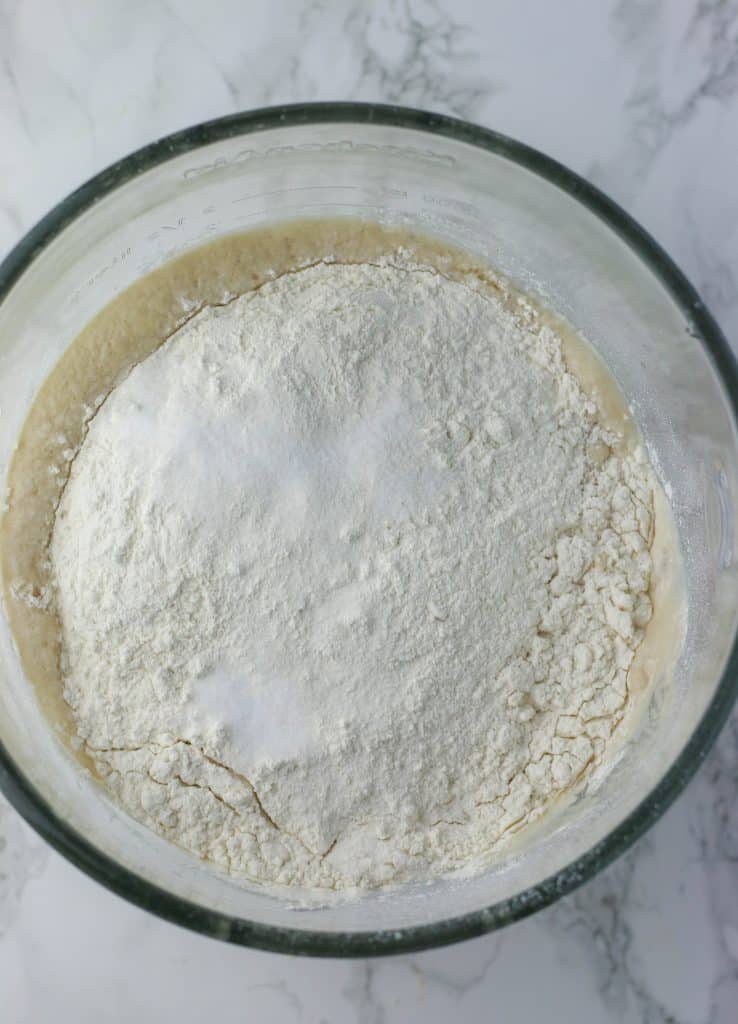
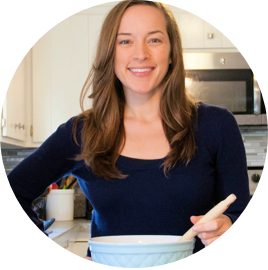
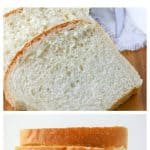

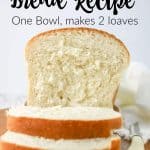
Peg says
I love the sounds of this recipe and will be making it. I have trouble kneading the dough so I usually let my bread machine do the kneading then i bake all breads in the oven. You could cut this recipe in half and make just one loaf in the machine or the oven, but what I do when recipes are a little larger than the bread machine, I mix it in the machine and do let it rise, and when it gets a bit above the top of the pan, I take it out and then shape it into to loaves and let it rise the second time in the loaf pans. You do have to watch the first rise doesn’t spill out of the pan, but otherwise I have done 6 cups of flour in the bread machine many times. Thanks for such a good recipe.
Heather says
thank you Peg! I’m so happy you loved this bread recipe as much as I did 🙂 Glad you were able to also let your bread machine do some of the work too!
Marlene says
Over the years, I’ve made pretty much every bread recipe out there, always searching for the best one. I’ve found it: Hands down, the best recipe for the softest, most delicious bread – and it stays soft for several days. And a bonus for it being so easy. I’ve made it several times and it turns out so delicious! AND….I made it Keto! I used a low carb flour I buy online (Wio Smart Foods), use less sugar to feed the yeast and add a little sugar substitute for flavor. Comes out to about 2 carbs per slice. But it’s REAL bread! I’m so happy I found this recipe – thank you!!!
Heather says
Oh wow Marlene that’s amazing to hear!! I’m so happy you loved it and that you were able to make it keto to fit your needs!
Jan says
I would love to know how to convert this for use in a bead making machine. Can you help?
Heather says
Hi Jan! I’ve never used a bread baking machine before so I can’t be much help. But hopefully this article from KAF is helpful!
Marlene says
I would cut recipe in half and make it in the machine the way you normally do.
Heather Lynn says
This became my go-to bread recipe last year when the bread shelves in the stores were empty. Today the fall weather is finally coming and the leaves are starting to turn, so I’m making this for my family to go with a big pot of chili. I knead dough by hand, and I don’t have a kitchen scale, so I always hold back the last cup of flour and add just enough as I go. The humidity must be lower today, because I had about 1/4 coup of flour left over when I was done kneading.
Heather says
aw that’s awesome to hear that you love the recipe and that it worked for you in a time of need! Sounds delicious with chili. And yes always good to go slow on the flour- can definitely change as the weather changes! 🙂
Tasha Lenz says
I’m needing to know it the measurements for the Yeast is exact; actual Table-Measuring Spoon, non of this “rounded” Tablespoon nonsense :-). I’ve been a serious baker for 20+years and, while some things we can learn to “eye ball”, when it comes to breads and the need for complete consistency, I don’t find it very amusing! 🙂 Thanks in advance!
Donna says
thanks for the recipe
I am definitely making this soon
Heather says
Thanks Donna! Let me know how it turns out!
Sue says
Hi Heather
I made the bread today and have to say it turned out amazing !!!!
This is my third time making it and I’m new to bread making , But boy did I nail it today 😊. Best yet !
Thanks for sharing your recipie with us
Heather says
Oh I’m so glad to hear that Sue!!!